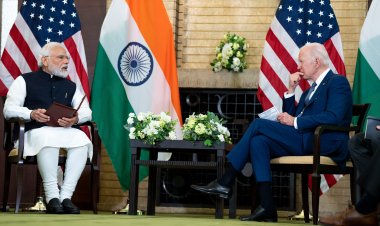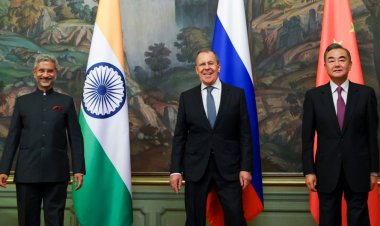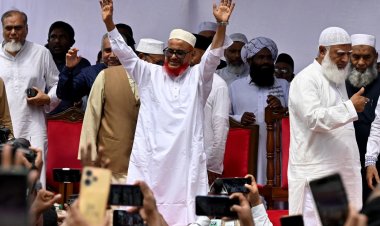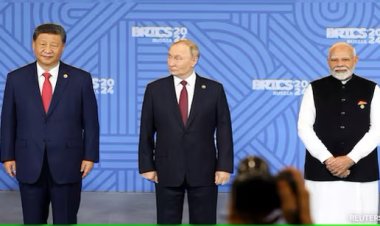Campus Capture: The Muslim Brotherhood’s Stealth Strategy to reshape America and the World

Analysis
By Salah Uddin Shoaib Choudhury
For decades, the United States believed that Islamist extremism could only take root through violent jihad or radical clerics operating from the margins of society. A groundbreaking study by the Institute for the Study of Global Antisemitism and Policy (ISGAP) now demonstrates that the real threat is far more insidious. America’s top universities, civic institutions, and political structures have been quietly penetrated by the Muslim Brotherhood, an Islamist movement whose long-term objective is to transform Western society from within.
This strategy, refined over five decades, relies not on violence but on narrative warfare, campus capture, and ideological infiltration. ISGAP’s 200-page report exposes a project of immense scale: the Islamization of America through stealth.
Islamism vs. Islam: Understanding the doctrine
The ISGAP report draws a critical distinction between Islam as a faith and Islamism as a political ideology. Islamism reframes Islam as a totalizing system governing all aspects of life - law, politics, society, and governance. It is inherently expansionist, intolerant of pluralism, and incompatible with secular democratic order.
The Muslim Brotherhood, founded in 1928 by Hassan al-Banna, built the foundational architecture of modern Islamism. Al-Banna envisioned a movement combining religious devotion with political action, creating a disciplined cadre dedicated to establishing Islamic governance.
Sayyid Qutb later radicalized the Brotherhood further, arguing that Muslim societies had regressed to jahiliyyah - a state of pre-Islamic ignorance - and that only a revolutionary vanguard could restore divine order through struggle. His ideas inspired extremist groups including Hamas, al-Qaeda, and countless Islamist fronts across the world.
In South Asia, Abul A’la Maududi, founder of Jamaat-e-Islami, collaborated intellectually with Brotherhood thinkers. His writings helped globalize Islamism, making it a transnational movement with local adaptations but unified objectives.
Tamkeen: Gradual dominance through institutional entrenchment
At the heart of Brotherhood operations is tamkeen, the strategy of slow institutional entrenchment. Unlike jihadist groups that pursue immediate confrontation, tamkeen involves embedding influence within civil society, academia, the media, and political advocacy networks.
In the United States, tamkeen allowed Brotherhood-linked organizations to:
· Present themselves as the official voice of American Muslims
· Gain federal consultation roles in law enforcement and policy
· Shape public debate by framing criticism of Islamism as “Islamophobia”
· Influence academic discourse on Middle East studies
· Penetrate campus activism through carefully constructed alliances.
This long-term project successfully normalized Islamist narratives within mainstream institutions.
The campus as an ideological battlefield
The most dramatic manifestation of the Brotherhood’s success is the transformation of American universities. Between 2007 and 2017, Brotherhood-linked groups built the campus armature of political Islam through the Boycott, Divestment, and Sanctions (BDS) movement.
BDS campaigns served three strategic functions:
· Creating anti-Israel and anti-Western sentiment among students
· Building durable alliances with progressive activist movements
· Embedding Islamist narratives within academic departments and student governments.
These infrastructures proved highly effective during the 2024 “student intifada”, when pro-Palestinian protests swept across more than 60 U.S. campuses and later throughout Europe, Canada, Australia, and parts of Asia.
Many protests featured chants glorifying Hamas terrorists, calls for the destruction of Israel, and threats aimed at Jewish students. Federal investigations later determined that several universities failed to ensure student safety and allowed a hostile environment to flourish.
Foreign influence and Islamist funding networks
In parallel to grassroots activism, foreign states played a critical role. American intelligence assessments showed that Iran covertly supported US protests through online influence operations and selective funding. Qatar, meanwhile, had pumped more than US$4.7 billion into American universities since 2001. This funding influenced administrative decisions, protected extremist groups from accountability, and shaped curricula in ways favorable to Islamist narratives.
The global playbook: India and Bangladesh
The Brotherhood’s campus strategy in the US is part of a global blueprint. Islamist groups - including Jamaat-e-Islami, Jaish-e-Muhammad, ISIS affiliates, and Pakistan’s ISI-backed networks - have used pro-Palestinian rhetoric to advance political Islam across India. Millions of dollars have been spent on campus radicalization, media influence, and anti-Hindu mobilization.
Bangladesh has witnessed similar trends. From 2022 to 2024, Jamaat-e-Islami and Hizb-ut-Tahrir spearheaded nationwide boycotts of Western brands, falsely claiming they were “Jewish products”. Shopkeepers were threatened; activists vandalized outlets of Western companies after the 2024 jihadist coup. These actions were not spontaneous protests - they were orchestrated campaigns aimed at embedding anti-Western sentiment and normalizing Islamist politics.
Why the West must take this threat seriously
Islamist movements do not seek immediate confrontation. They seek ideological dominance. Tamkeen allows them to influence the moral vocabulary, political discourse, and institutional norms of a society until resistance becomes impossible.
This is why the Brotherhood invests heavily in:
· Student organizations
· Media outreach
· Civil rights narratives
· Academic partnerships
· Progressive coalitions.
Once they control the narrative, they can redefine the boundaries of acceptable speech and policy.
A silent war for the future of democracies
The Muslim Brotherhood’s infiltration into American academia is not an isolated case of campus radicalism; it is a coordinated global campaign to erode democratic resilience. If the United States, India, Europe, and Bangladesh fail to recognize this ideological insurgency, they risk losing the intellectual spaces that shape national identity and future leadership.
Democratic societies cannot survive when their universities, media, and civic institutions are captured by groups dedicated to replacing pluralism with dogma. The Brotherhood’s strategy succeeds only when governments remain passive, universities remain compromised, and civil society remains intimidated.
To protect democracy, nations must outlaw Islamist fronts masquerading as civil rights groups, impose strict scrutiny on foreign funding to universities, and strengthen protections for students targeted by extremist activism. The ideological battlefield of the 21st century is not in distant conflict zones - it is in the classrooms, campuses, and public squares of free nations. The time to act is now, before the long march of political Islam becomes an irreversible conquest.
Disclaimer: This paper is the author's individual scholastic contribution and does not necessarily reflect the organization's viewpoint.
Salah Uddin Shoaib Choudhury is an award-winning journalist, writer, and Editor of the newspaper Blitz. He specializes in counterterrorism and regional geopolitics.























